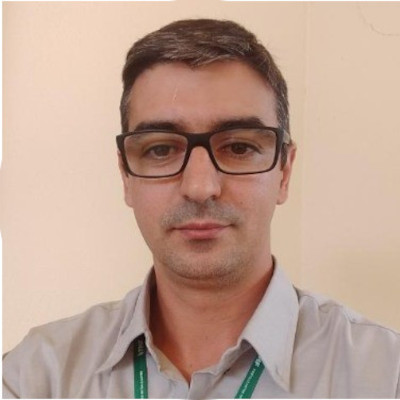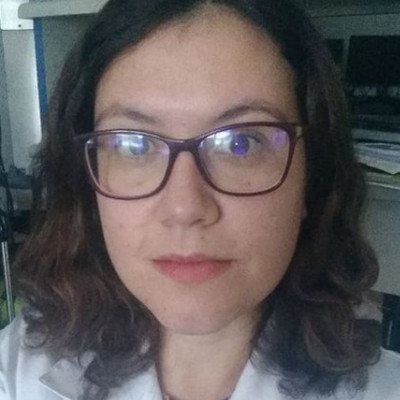In 2021, the LNLS Users Group (LNLSUG) organized the first LNLSUG PhD Thesis Award to recognize outstanding research work using LNLS facilities.
Submissions were received by the LNLS Users Committee. Eligibility of the PhD thesis and candidate required that (i) the research performed by the candidate at LNLS facilities must be key for the main conclusions of the PhD thesis, and (ii) the thesis must have been successfully defended between January 1st 2019 and July 31st 2021.
The candidates were evaluated by the LNLS Users Committee according to the quality and impact of the PhD work within the context of the field, the importance of the results obtained at LNLS in supporting the main conclusions of the PhD work, and the quality and capability of the candidate based on the thesis manuscript and associated published work.
The decision was announced during the closing session of the 31st LNLS Annual Users Meeting (RAU), on November 11th, 2021.
The finalist of the LNLS Users Group PhD Thesis Award 2021 are:
More information about the finalists is available below.

Thesis Title: Improving the staining protocol for the study of Rhodnius prolixus by synchrotron microtomography.
Abstract: During the years microtomography using synchrotron light technique has proved to be an excellent tool to study the internal and external structures of Rhodnius prolixus, main insect vector of Tripanossoma cruzi, and the etiologic agent of Chagas Disease. However, the first works have shown that the visualization of some structures can vary according to the type of beam and sample treatment. The objective of this work is to develop a protocol to identify the best fixation and staining sample treatment by the evaluation of the image quality parameters, allowing the segmentation of different structures of Rhodnius prolixus in two different periods of 5th instar (unfed and ecdysis). The samples were tested with different combinations of fixatives and staining. The choice of the best protocol was done with qualitative analyses (through the observation of the images) and quantitative analyses (through the calculation of image quality parameters, such as contrast and signal-to-noise ratio). The measurements were performed at the Brazilian Synchrotron Light Source (LNLS), Campinas-Brazil, and at ELETTRA Synchrotron Facility, Trieste-Italy.

Thesis Title: Formation, destruction and identification of complex organic molecules (COMs) in circumstellar environments.
Abstract: The universe is rich in chemical and molecular complexity. To date, more than 200 molecules have been detected in interstellar and circumstellar regions including protostellar objects and planetary nebulae (PNe), with more than 60 observed in extragalactic objects. Studies on the mechanisms of formation and destruction of molecules, as well as the identification of molecules in observational spectra, are fundamental for the understanding of chemistry in astrophysical environments. In this work, experimental and observational techniques were used for the chemical description of different astrophysical objects in which complex organic molecules (COMs) and polycyclic aromatic hydrocarbons (PAHs) are present. Experimentally, the formation and destruction of molecules derived from benzene (C6H6), the basic unit of PAHs, were studied through the interaction of photons in the X-ray range with molecules in the gas phase employing time-of-flight mass spectrometry (MS-TOF), thus simulating the processes that occur in the PNe photodissociation regions (PDRs). We analyzed the following molecules: C6H6, naphthalene (C10H8), biphenyl (C12H10) and cyclohexane (C6H12), the latter being the basic unit of super-hydrogenated PAHs (Hn-PAHs). Additionally, we studied the protonation and deprotonation effects of benzene rings of these molecules in the condensed phase by the Electron Stimulated Ion Desorption technique (ESID) of astrophysical ice analogs.

Thesis Title: Strategies for agronomic biofortification of rice with selenium in tropical agroecosystems.
Abstract: Selenium (Se) is an essential element for humans and animals. Its role in humans and animals is related to the activity of more than 25 selenoproteins, formed from the naturally occurring amino acids selenocysteine and selenomethionine (e.g. glutathione peroxidase). Selenium intake by humans depends fundamentally on the nutritional quality of the food with respect to this nutrient. In many regions of the world, especially in the tropics soils present a low content of Se. This is the main factor responsible for the low availability of Se for plants. In this sense, the agronomic biofortification of food with Se is a good strategy that can be used to enrich agricultural crops (as rice) decreasing the incidence of diseases in vulnerable populations. This study aimed to investigate the effects of the application of Se via soil (SeVI) and via leaf (SeIV and SeVI) on: i) grain yield; ii) contents of Se in different parts of the plant and of the grain; iii) physiological variables; and, iv) spatial distribution of Se and other elements in biofortified rice grains. Experiments were carried out in two agricultural production fields. Selenium rates ranging from 5 to 120 g ha-1 were evaluated in four replicates on Lambari-MG (Cropping seasons of 2015/2016 and 2016/2017) and Patos de Minas-MG (Cropping season of 2016/2017) municipalities. The application of SeVI via soil was carried out coating the fertilizer monoammonium phosphate (MAP) or as saline solutions. The application of SeIV and SeVI via leaf was carried out using saline solution at the flowering and grain-filling stages of rice. The physiological variables in all treatments were evaluated in the leaves. After harvest, grain yield, Se, macro, and micronutrient contents were determined in different parts of the rice plant. The results showed that the supplied Se rates positively affected some physiological variables and improved the nutritional quality of the polished rice grains in terms of their Se contents. Only a low percentage of the Se supplied to the plants was uptake by the grains. Adequate Se contents in the polished grain were achieved with the assessed Se rates, allowing safe consumption of Se for humans. The spatial distribution of the elements varied in the grain, with the highest concentration of Se being found in the endosperm. Other elements, as Fe, Ca, Zn, K, and Mn were located in the husk or in the embryo of the grain. We conclude that concluded that the agronomic biofortification of rice with Se is a promising strategy for tropical soils. However, peeling and polishing the rice grain can lead to significant losses of Se, macronutrients (as K and P), and micronutrients (as Zn and Fe).

Thesis Title: Catalytic and electrocatalytic study of ceria-based nanomaterials as anodes of intermediate-temperature solid oxide fuel cells.
Abstract: The development of an economically feasible Solid Oxide Fuel Cell (SOFC) technology has driven the research activity in this area toward the reduction of their operating temperature. The focus has been set in the design of new anode materials, with high catalytic and electrocatalytic activity and resistance to coke deposition when hydrocarbons are used as fuels. In particular, efforts have been set in the development of new nanostructured materials with high ionic-electronic conductivity to enhance electrode reactions kinetics when operating temperature is reduced to the intermediate temperature range (500-750 °C). In this work, nanostructured CeO2-based materials were developed and their catalytic and electrocatalytic activity were studied at a temperature range of 500-750 °C, for their potential application as anodes of intermediate temperature solid oxide fuel cells (IT-SOFCs). Highly active anode materials for fuel oxidation were synthesized with both ionic and electronic conductivity, fundamental properties to guarantee a good performance of the cell. Two strategies were followed to improve the performance of the anodes that are currently being developed. In the first place, the partial substitution of ZrO2 by Sc2O3 in the CeO2-ZrO2 lattice was proposed, synthesizing materials with the following composition: Ce0.9ScxZr1-xO2-d with 0≤x≤0.1. The objective of this substitution was to add an aliovalent dopant to the CeO2-ZrO2 mixed oxide lattice to improve ionic conductivity in the material by generating oxygen vacancies and thus improve the catalytic activity for methane oxidation. Second, metal-ceramic oxide composites based on CuO-NiO/CeO2-ZrO2-Sc2O3 and Fe2O3-NiO/CeO2-ZrO2-Sc2O3 were studied. The objective was to partially replace NiO by CuO or Fe2O3 in such a way as to improve the resistance to carbon formation in the anodes in the presence of a fuel with carbon in its composition.

Thesis Title: Geochemical processes that control the dynamics of arsenic in abandoned mine wastes.
Abstract: Mining in northwestern Argentina has been a relevant activity since the 20th century, developing several mining projects, including Mina Concordia. This deposit was exploited discontinuously until its final closure, leaving the waste exposed to weathering and generating acid mine drainage (AMD) rich in metal(oid)s and sulfates. Due to its high toxicity and mobility, arsenic (As) represents one of the most dangerous pollutants associated with this type of waste. Even though in our country there are a large number of dispersed environmental liabilities, geochemical studies that provide scientific information to understand their impact are very scarce. In this framework, this thesis provides numerous geochemical data that allow us to understand the impact on the environment caused by the weathering of the accumulated waste in the tail dams, placing special emphasis on the study of the As cycle in areas affected by AMD. To achieve the proposed objectives, a complete chemical and mineralogical characterization of the residues was carried out using conventional techniques (ICP-MS/ICP-OES, XRD, SEM/EDS) and synchrotron light techniques (XAS and µ-FRX). In addition, sequential release and extraction assays were performed to identify the main As-bearing phases and define possible release mechanisms. Finally, and to evaluate the danger of mining waste from the point of view of its capacity to generate acidity, different standardized acidity tests were carried out, the results of which can be applied to the design of future remediation actions.

Thesis Title: Revealing perovskite solar cells properties using synchrotron radiation techniques.
Abstract: The development of sustainable energy sources, specially solar energy, has become crucial for mitigating global warming. In this context, perovskite solar cells (PSCs) have received significant attention due to the high efficiency achieved in a few years and their low preparation cost. despite these, many aspects of perovskite film formation, their structural and optoelectronic properties need to be better understood. Synchrotron-based characterization techniques are essential tools to explore the perovskite materials profoundly and have open multiple possibilities of in situ investigations. In this thesis, grazing incidence wide-angle X-ray scattering (GIWAXS) was used in situ during spin-coating preparation of perovskite films to shed light on the first steps of formation and crystallization. In situ GIWAXS allowed to follow the intermediate phases formed during the spin coating for the antisolvent method and the influence of the relative humidity, composition, and solvent proportions. The same strategy was used to study the solvent quenching method, which replaces the antisolvent with an inert gas flow. The influence of the solvent (dimethyl sulfoxide, DMSO vs. n-methylpyrrolidone, NMP) and composition were investigated, revealing completely different intermediate phases, depending on the solvents and on the perovskite composition. A higher amount of Cs and NMP inhibit the formation of hexagonal phases leading to better performance for formamidinium-based perovskite. To a further a deeper characterization at the nanoscale, the nano-FTIR technique was employed, unravelling the nanochemistry heterogeneities of these perovskite films. The results revealed PbI2 and hexagonal phase grains within the compound, depending on the composition (with and without Cs).

Thesis Title: Analysis of the interaction of Ag and ZnO nanoparticles in Phaseolus vulgaris.
Abstract: Nanoecotoxicology is a growing field of science driven by the extensive use of nanomaterials in commercial products and agriculture. Their use in agriculture is to become a reality through fertilizers and pesticides. On the other hand, little is known about possible collateral effects that of nanomaterials and therefore they may pose a threat to human health and the environment. To shed light on these topics, one must better understand the mechanisms of interaction between nanoparticles (NP) and living beings. Seed treatment is a common practice that provides micronutrients and protection. This study investigated the effects of ZnO and Ag NP on the germination of Phaseolus vulgaris seeds and the interaction (uptake and biotransformation) with the seed coat. Zinc-based nanoparticles were chosen because it is a plant micronutrient, whilst Ag ones present antimicrobial activity. The common bean seed treatments and synchrotron analysis were performed at the ID21 beamline in ESRF, CENA-USP and XRF beamline in LNLS. The bean seed coat presents three different layers, which are one of the objects of this study. The seeds were exposed to Ag2S NP, Ag metallic NP, ZnO NP, AgNO3 and ZnSO4 in different concentrations (Ag 100 and 1000 mg L-1 while Zn 100, 1000 and 5000 mg L-1). After 5 days of post-treatment and germination, seed coats were recovered, sectioned and investigated by FTIR, μ-XRF and μ-XANES. μ-XRF analysis showed that most of the NP treatments remained trapped in the seed coat, while μ-XANES unraveled that depending on the composition of pristine materials they can be biotransformed. Finally, FTIR pointed out that the proportion of organic functional groups present in the seed tissue were modified due to the presence of NP.

Thesis Title: The role of the support in the stabilization of the metallic phase in the preferential oxidation of CO (CO-PROX) reaction.
Abstract: In heterogeneous catalysis, the support has a key role in the stabilization of the active sites on the surface of the catalysts. For the CO oxidation reaction (CO-OX, or under H2-rich atmosphere. the preferential oxidation of CO, CO-PROX), the nature of the support may also impact the CO conversion due to its role in the reactional mechanism. Aiming to deeply explore the support’s effects, colloidal AuCu NPs were supported on commercial SiO2 and CeO2, as well as on CeO2/SiO2 prepared by impregnation of different CeO2 loadings. Under CO-OX reaction, the presence of Cu/CuOx improved the catalytic performance and the sintering-resistance of the NPs. Also, the importance of the pre-made alloy in the stabilization of unique active sites was clear. In CO-PROX reaction, the AuCu alloy was more active than the Au-CuOx species. With regards the supports, the CeO2 led to a higher CO conversion in comparison with the SiO2. In the case of CeO2/SiO2, the CeO2 amount impacted on the mobility of the CuOx species and the Cu reincorporation under reducing atmosphere, modifying the catalytic performance of the catalysts. Based on the information obtained by the AuCu-based catalysts, a new support was proposed to be employed in the CO-PROX reaction: LaCo1-xFexO3 (x = 0.0, 0.1, 0.5, 1.0) perovskites. These perovskites were used in CO-PROX as catalysts and as support for Pt (0.5 % wt.) and the results were promising. Without Pt, the compositions with x different of 1.0 achieve around 80 % of CO conversion. In the presence of Pt, the catalytic performance of the perovskite was changes, especially for the x = 1.0. In this case, the CO conversion was increased and the temperature of the maximum conversion was decreased. Thus, the results obtained for the La-based perovskites clearly showed the promising performance of this system and showed the importance of the use of the knowledge obtained for well-known system to prepare new catalytic systems.